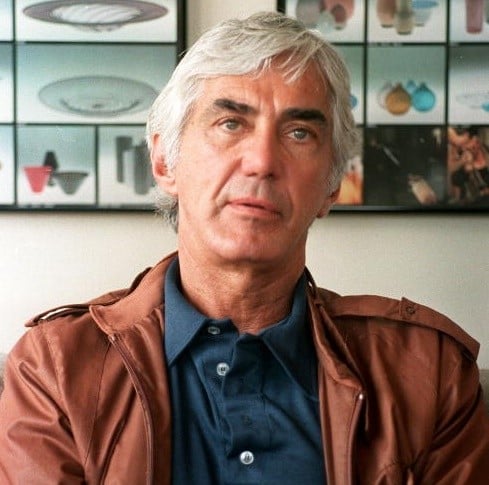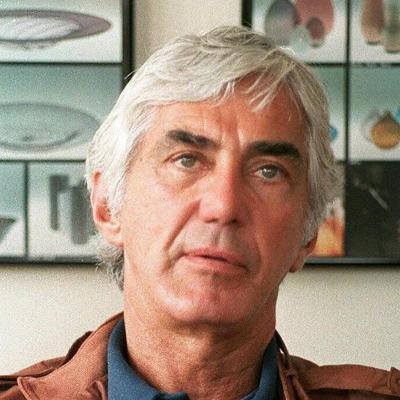John DeLorean at a Glance
- Categories: Business, Business > Executives
- Net Worth: $500 Thousand
- Birthdate: Jan 6, 1925 - Mar 19, 2005 (80 years old)
- Birthplace: Detroit
- Gender: Male
- Profession: Businessperson, Engineer, Designer
- Nationality: United States of America
John DeLorean’s Net Worth: A Look at the Life of the Automotive Visionary
John DeLorean, a name synonymous with automotive innovation and entrepreneurial ambition, left an indelible mark on the industry, though his story is one of both triumph and controversy. At the time of his death in March 2005, DeLorean’s net worth was estimated at $500,000. While this figure reflects the financial struggles that marked the later years of his career, it doesn’t diminish the significant impact he had on car design, engineering, and popular culture. Best known for founding the DeLorean Motor Company (DMC), DeLorean’s legacy extends far beyond the iconic DMC-12, the car made famous by the “Back to the Future” film franchise. Before establishing his own venture, he enjoyed a remarkably successful career at General Motors (GM), where he spearheaded the design of several classic vehicles that shaped the automotive landscape.
Early Life and Career at General Motors
John Zachary DeLorean was born in Detroit, Michigan, in 1925, as the eldest of four sons. His father, Zachary, was a Romanian immigrant who worked in a mill factory, while his mother, Kathryn, was a Hungarian immigrant employed by General Electric. His upbringing was marked by the challenges of his parents’ volatile relationship, which led Kathryn to seek refuge with her sister in Los Angeles for extended periods. This early exposure to different environments likely contributed to DeLorean’s independent spirit and innovative thinking.
DeLorean’s educational journey began in Detroit’s public schools and continued at Cass Technical High School, where he excelled academically and showcased his musical talents. This led to a scholarship at the Lawrence Institute of Technology, a college known for producing top-tier engineers in the automotive field. His studies were interrupted by World War II, during which he served in the Army for three years before being honorably discharged. Upon his return, he completed his degree at Lawrence and further honed his skills at the Chrysler Institute, earning a master’s degree in automotive engineering.

G. WEAVER/AFP/Getty Images
After a brief, less than a year stint at Chrysler, DeLorean joined Packard Motor Company in 1953. He quickly made his mark, gaining recognition for his improvements to the Ultramatic automatic transmission under engineer Forest McFarland. DeLorean’s career trajectory took a significant turn when he was appointed to succeed McFarland as head of research and development after four years. However, the company’s merger with Studebaker Corporation in 1954 prompted DeLorean to seek new opportunities, ultimately accepting a position with General Motors as vice president of engineering under Oliver K. Kelley.
The Rise of the Pontiac GTO and Other GM Successes
In 1956, DeLorean’s career at General Motors began at the Pontiac division, where he served as an assistant to general manager Semon Knudsen and chief engineer Pete Estes. He rapidly ascended the ranks, fueled by his engineering prowess and innovative approach. DeLorean’s contributions were pivotal in the development of several groundbreaking automotive technologies, resulting in numerous patents. His talent earned him a promotion to division chief engineer in 1961. This marked the beginning of a period where he would leave an indelible mark on the automotive world.
One of DeLorean’s most significant achievements was the Pontiac GTO. He played a key role in the conceptualization, engineering, and marketing of this iconic muscle car. The GTO’s blend of performance and style resonated with a generation, solidifying its place in automotive history. His success at Pontiac did not go unnoticed. His exceptional leadership and innovative spirit led to his promotion to head the entire Pontiac division in 1965. At the young age of 40, DeLorean became the youngest division head in GM’s history, a testament to his remarkable achievements and leadership qualities. During his tenure, he oversaw the development of other popular vehicles like the Pontiac Firebird and the Pontiac Grand Prix, luxury cars that further solidified Pontiac’s position in the market.
In 1969, DeLorean was promoted to head the prestigious Chevrolet division, an even larger and more complex undertaking. While Chevrolet faced challenges at the time, including organizational issues and financial difficulties, DeLorean’s leadership helped the brand achieve record sales by 1971. However, his tenure at Chevrolet was not without its difficulties. Conflicts arose, particularly regarding the introduction of cost-cutting measures and worker issues at the General Motors Assembly Division. In 1973, DeLorean resigned from GM, citing disagreements over the company’s direction, signaling his disillusionment with the corporate environment and his desire to pursue his own vision.
DeLorean Motor Company: A Dream Turned Reality and Its Fall
In 1973, after departing from General Motors, DeLorean embarked on his most ambitious venture: founding the DeLorean Motor Company (DMC). His vision was to create a sports car that combined advanced technology with a distinctive design. The culmination of this vision was the DeLorean Safety Vehicle, a two-seater sports car featuring a stainless steel body and gull-wing doors.
The DMC-12 was designed to be more than just a car; it was meant to represent DeLorean’s engineering philosophy and his pursuit of innovation. Production delays, however, hampered the launch of the DMC-12, and the car did not reach the market until 1981, by which time the automotive industry was undergoing significant changes. The new car market had cooled significantly, and the economic climate was less favorable than anticipated.
By 1982, the DeLorean Motor Company faced severe financial difficulties, with over half of the cars produced remaining unsold. The company was burdened by massive debt, and the economic climate was unfavorable. This led to the inevitable: the DeLorean Motor Company declared bankruptcy, marking a significant setback in DeLorean’s career and a tragic end to his automotive dream.
“Back to the Future” and the DMC-12’s Legacy
Despite the commercial failure of the DeLorean Motor Company, the DMC-12 achieved iconic status years after its production ceased. The car’s distinctive design and innovative features caught the attention of filmmakers, and in 1985, the DeLorean became a star of the science-fiction comedy film “Back to the Future.” The car, modified into a time machine by the eccentric Dr. Emmett Brown, instantly captured the imagination of audiences worldwide. The movie’s success transformed the DMC-12 into a cultural icon, and its popularity continues to this day. The DMC-12’s association with “Back to the Future” has ensured its place in popular culture, making it one of the most recognizable and beloved cars of all time.
Legal Battles and the Aftermath
The collapse of the DeLorean Motor Company led to significant legal troubles for John DeLorean. In 1982, he was charged with trafficking cocaine after being caught in an FBI sting operation orchestrated by informant James Hoffman. During his trial, DeLorean’s legal team successfully argued that he had been unfairly targeted and entrapped by the FBI and DEA. This defense proved effective, and DeLorean was found not guilty in August 1984, a major victory amidst personal and professional turmoil.
However, further legal battles followed in 1985. DeLorean was indicted on charges of defrauding investors and tax evasion. The legal proceedings were lengthy and complex, but ultimately, he was acquitted of all charges. These legal battles added further strain to DeLorean’s personal and financial life and marked a challenging period in his life.
Personal Life and Legacy
John DeLorean’s personal life was as dynamic as his professional career. He married four times. His first marriage was to Elizabeth Higgins, lasting from 1954 to 1969. He then married actress and model Kelly Harmon, divorcing in 1972. In 1973, he married Cristina Ferrare, and they had two children together, Zachary and Kathryn Ann, before divorcing in 1985. His final marriage was to Sally Baldwin in 2002, with whom he had a daughter, Sheila. DeLorean’s personal relationships reflect the complexity of his life and the numerous changes he experienced.
John DeLorean died in 2005 at the age of 80, succumbing to a stroke at Overlook Hospital in Summit, New Jersey. His remains are buried at the White Chapel Cemetery in Troy, Michigan, where his tombstone features an engraving of the DeLorean sports car with its iconic gull-wing doors open. DeLorean’s legacy continues to be debated and discussed. While the DeLorean Motor Company ultimately failed, his innovative spirit and contributions to automotive design, especially at General Motors, remain significant. He is remembered not only for the DMC-12 but also for his earlier work on vehicles like the Pontiac GTO, which helped to define an era.
Conclusion
John DeLorean’s life was a complex tapestry woven with threads of innovation, ambition, triumph, and controversy. His impact on the automotive industry is undeniable. While the DeLorean Motor Company faced a tragic end, his legacy extends beyond the fate of the DMC-12. His early successes at General Motors and his relentless pursuit of his automotive vision continue to inspire. Despite the legal battles and financial setbacks, John DeLorean’s story is a testament to the enduring power of innovation and the complexities of the American dream.

